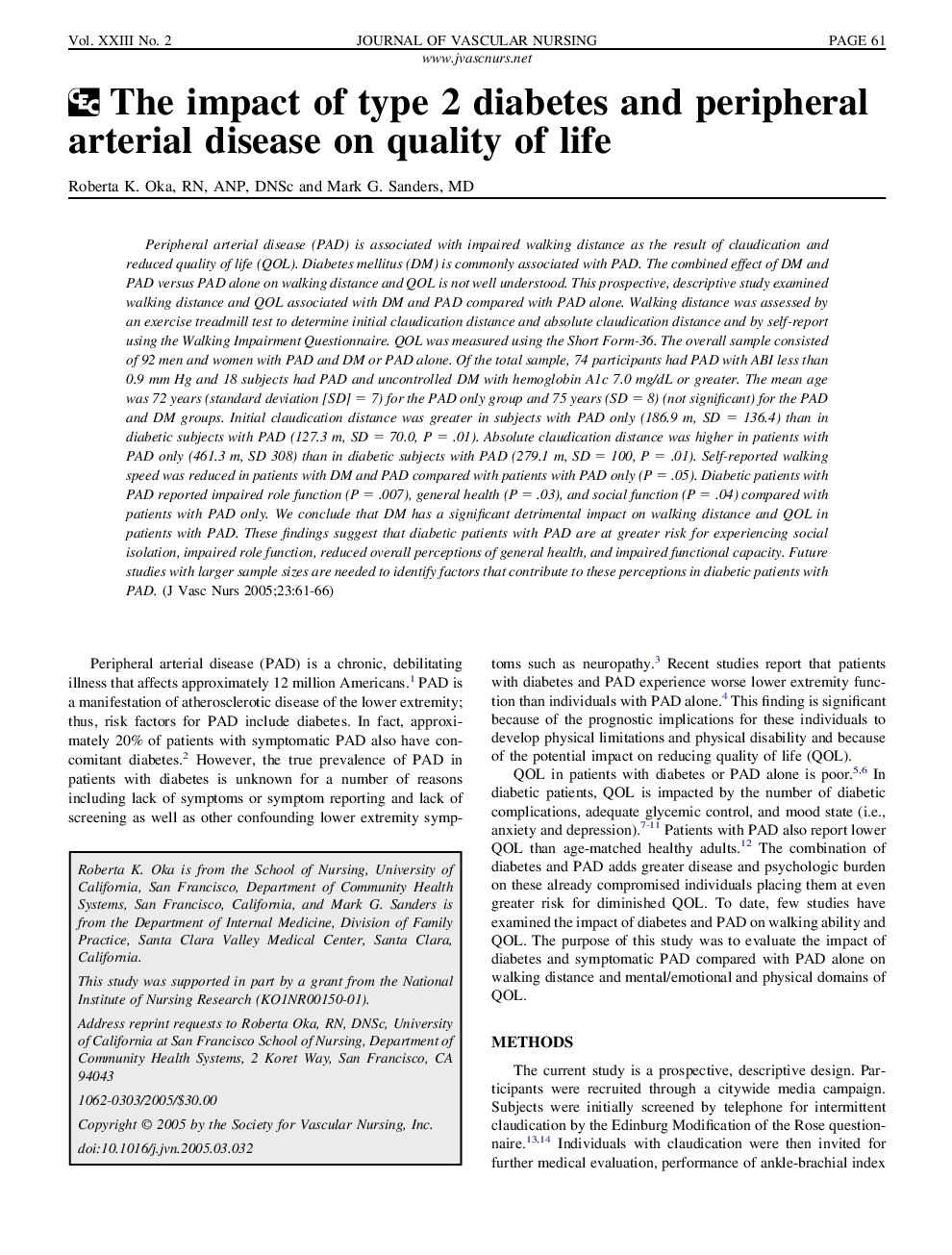| Article ID | Journal | Published Year | Pages | File Type |
|---|---|---|---|---|
| 9067317 | Journal of Vascular Nursing | 2005 | 6 Pages |
Abstract
Peripheral arterial disease (PAD) is associated with impaired walking distance as the result of claudication and reduced quality of life (QOL). Diabetes mellitus (DM) is commonly associated with PAD. The combined effect of DM and PAD versus PAD alone on walking distance and QOL is not well understood. This prospective, descriptive study examined walking distance and QOL associated with DM and PAD compared with PAD alone. Walking distance was assessed by an exercise treadmill test to determine initial claudication distance and absolute claudication distance and by self-report using the Walking Impairment Questionnaire. QOL was measured using the Short Form-36. The overall sample consisted of 92 men and women with PAD and DM or PAD alone. Of the total sample, 74 participants had PAD with ABI less than 0.9 mm Hg and 18 subjects had PAD and uncontrolled DM with hemoglobin A1c 7.0 mg/dL or greater. The mean age was 72 years (standard deviation [SD] = 7) for the PAD only group and 75 years (SD = 8) (not significant) for the PAD and DM groups. Initial claudication distance was greater in subjects with PAD only (186.9 m, SD = 136.4) than in diabetic subjects with PAD (127.3 m, SD = 70.0, P = .01). Absolute claudication distance was higher in patients with PAD only (461.3 m, SD 308) than in diabetic subjects with PAD (279.1 m, SD = 100, P = .01). Self-reported walking speed was reduced in patients with DM and PAD compared with patients with PAD only (P = .05). Diabetic patients with PAD reported impaired role function (P = .007), general health (P = .03), and social function (P = .04) compared with patients with PAD only. We conclude that DM has a significant detrimental impact on walking distance and QOL in patients with PAD. These findings suggest that diabetic patients with PAD are at greater risk for experiencing social isolation, impaired role function, reduced overall perceptions of general health, and impaired functional capacity. Future studies with larger sample sizes are needed to identify factors that contribute to these perceptions in diabetic patients with PAD.
Related Topics
Health Sciences
Nursing and Health Professions
Nursing
Authors
Roberta K. RN, ANP, DNSc, Mark G. MD,
